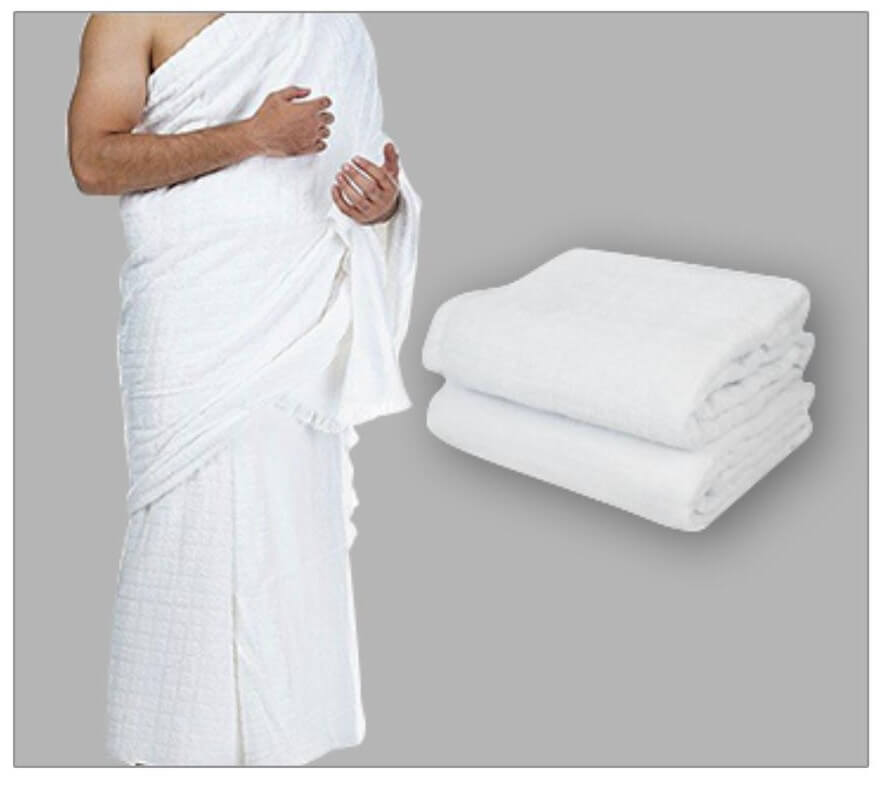Description
Ihram Set for Men:
- Izār (Lower Garment):
- The Izār is the lower garment, a simple, unsewn white loincloth or sheet that is wrapped around the waist. It is secured with a belt, covering the lower part of the body modestly.
- Rida (Upper Garment):
- The Rida is the upper garment, a plain white sheet or towel-like cloth that is draped over the shoulders and left open. It covers the upper body without any stitching.
- Footwear:
- Pilgrims in Ihram typically wear sandals or flip-flops, and it is common for them to be barefoot during certain rituals of the pilgrimage.
- Headgear:
- Men in Ihram are not allowed to cover their heads. This includes wearing any form of headgear such as hats or caps, emphasizing a sense of humility and equality among the pilgrims.
- Avoidance of Stitched Clothing:
- The Ihram set is intentionally simple, devoid of any stitching or fitted clothing. This emphasis on simplicity is a symbolic gesture, reinforcing the idea of equality and humility during the pilgrimage.
- State of Consecration:
- Wearing the Ihram set signifies the pilgrim’s entry into a state of ritual consecration, where they focus on spiritual aspects of the pilgrimage and distance themselves from worldly distractions.
- Symbolism:
- The plain white attire serves as a symbolic representation of purity, equality, and the universal brotherhood of Muslims as they come together for the sacred pilgrimage.
The Ihram set is not just clothing; it is a sacred attire that carries deep religious and symbolic significance, emphasizing the spiritual journey and the principles of humility and unity during the pilgrimage.




Reviews
There are no reviews yet.